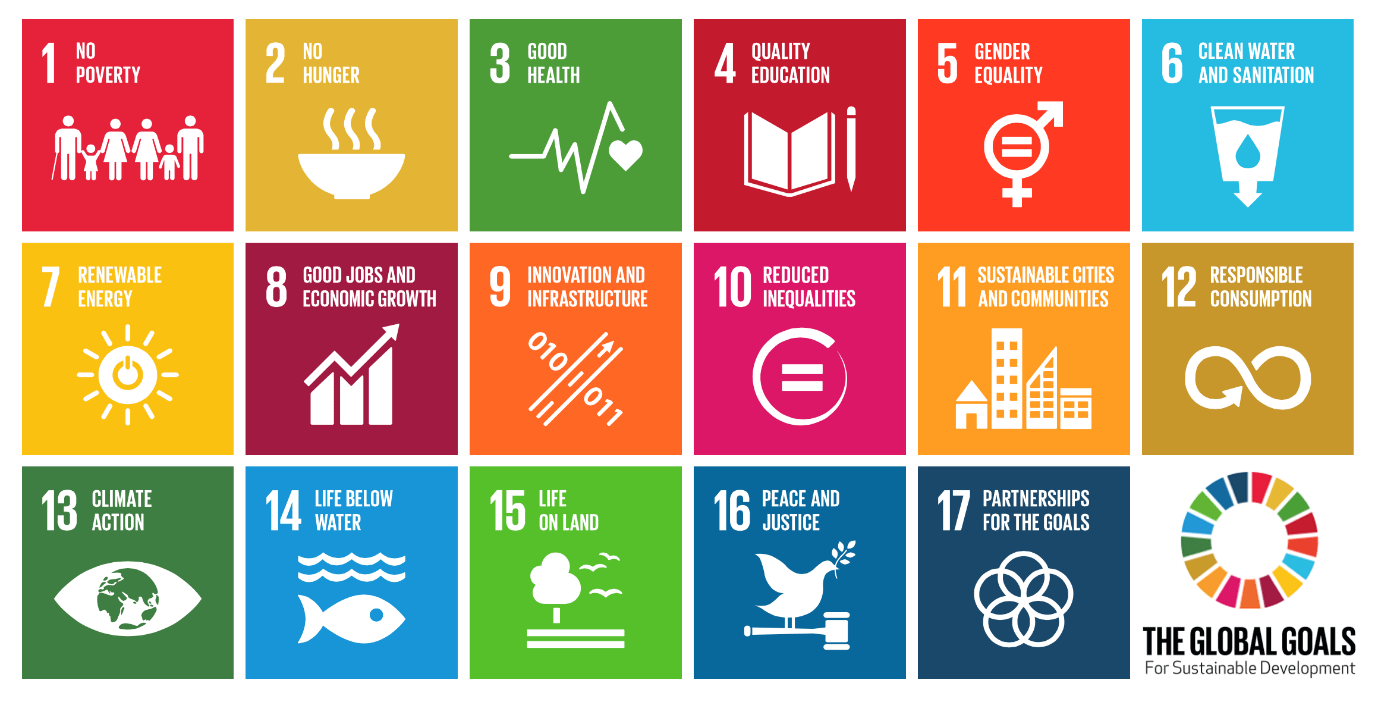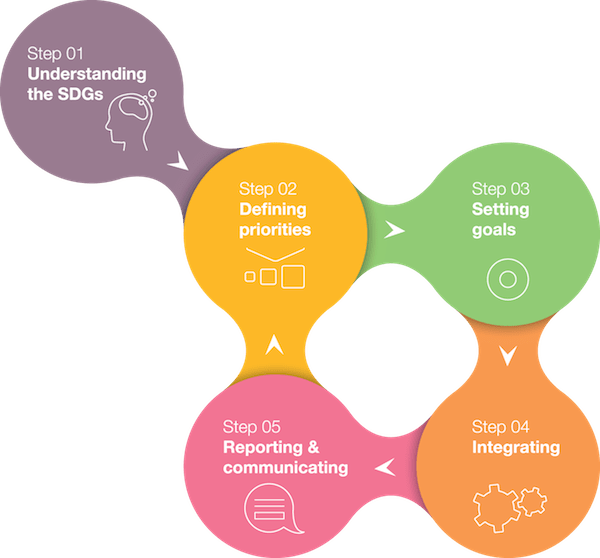I didn’t think I would ever talk of the global pandemic in terms of wins, and yet here I am.
One of the biggest wins to be taken from the early days of the pandemic is that we proved beyond doubt that we humans have an enormous capacity to adapt. We drastically changed the way we lived our lives and organised ourselves differently in the ways we worked. We proved that change is possible.
Business cannot thrive where there is inequality, unrest, environmental issues or poverty
Under the twin storms of the Climate Emergency and the Pandemic there comes a new appetite for change. We don’t want to go back to ‘normal’, it’s exceptionally clear it wasn’t working for us. Individuals and organisations are striving for a new way of living and working for a better, safer, just and sustainable world.
The Sustainable Development Goals (SDGs) are 17 interlinked goals designed to be a ‘blueprint to achieve a better and more sustainable future for all’.

The goals are underpinned by 169 targets and 230 indicators. They cover economic, social and environmental aspects and work cohesively to achieve sustainable development. The goals were set in 2015 by the United Nations and agreed upon by all the 193 member states. Business cannot thrive where there is inequality, unrest, environmental issues or poverty, and so businesses are pivotal in providing solutions to these challenges, whilst also adapting to generate new business opportunities.
The SDG Compass is a business guide on how to align strategies and measure and mange contributions to the goals. In applying the five steps of the compass guide a business will ensure that sustainability is at the very core of the business strategy.
Step one – Understanding
The first step for any business is to fully review all of the SDG’s and their underlying targets so they can understand them better. This gives the business the space to consider the risks and opportunities to people and the environment, in terms of its own operations and that of its value chain.
Step two – Priorities
Next, a business will need to define its priorities. Not all of the 17 goals will be relevant to your business so a high-level mapping of the value chain is carried out to identify areas where the business can actually have an impact. Selecting indicators, collecting data and defining the business priorities concentrates the areas where the most effort will take place.
Step three – Goals
The third step is goal setting. Setting specific and measurable goals, within a timeframe, is proven to drive performance and create a sense of shared purpose within a business. It is important that you are clear on the scope of the goals and how you will record and measure them, defining your baseline/start point then setting your level of ambition. Using the Outside In approach business can look at the global needs first, and then set its own goals accordingly.
An important part of step three is announcing your business goals to the public (all or some). Transparency inspires and engages stakeholders across the board. Being transparent, especially during challenging times, can strengthen your leadership as you will be trusted and respected, leading to better solutions and fuller engagement.
Step four – Integrating
This must be driven by active leadership from the top down
Step four deals with integrating sustainability into your core business and embedding your targets. In order to succeed, the sustainability goals of your business must be driven by active leadership from the top down, reflected in the mission statement and purpose of your business. This ties the success of the business directly in to sustainable development.
Integration is also covered specifically in Goal 17 – Partnerships for the goals. This aims to bring together different groups of people around a shared set of goal or targets.
Step five – Communicating
The final step of SDG Compass deals with Reporting and Communication. Stakeholders have driven the demand for greater disclosure for business sustainability. It is an important step that a business reports and communicates its progress against the relevant SDGs. There is an expectation that businesses will integrate sustainability information into their annual reporting cycle. This reporting can be through internationally recognised standards for sustainability reporting (such as Global Reporting Initiative) or through a standard alone SDG report structured around the relevant SDGs.

Through the lens of the SDGs, a business can innovate by developing and delivering solutions to the challenges the goals create. They will discover new opportunities to grow the business, lower their risk profile and be a resilient business. A regenerative business. By embedding sustainability across the board, and all through the value chain, a business can benefit in a host of ways; increasing sales, innovate a new market segment for themselves, strengthen their brand, improve operational efficiency and improve employee retention.
Article 67, agreed to by all 193 UN Member States, reads ‘Private business activity, investment and innovation are major drivers of productivity, inclusive economic growth and job creation. We acknowledge the diversity of the private sector, ranging from micro enterprises to cooperatives to multinationals. We call on all businesses to apply their creativity and innovation to solving sustainable development challenges.’
The SDG’s are a framework for using your business as a force for good. How does your business measure up?
 This feature is written by Sheena Brockie, Environmental Consultant.
This feature is written by Sheena Brockie, Environmental Consultant.
Sheena can be contacted here.
Useful Links:














